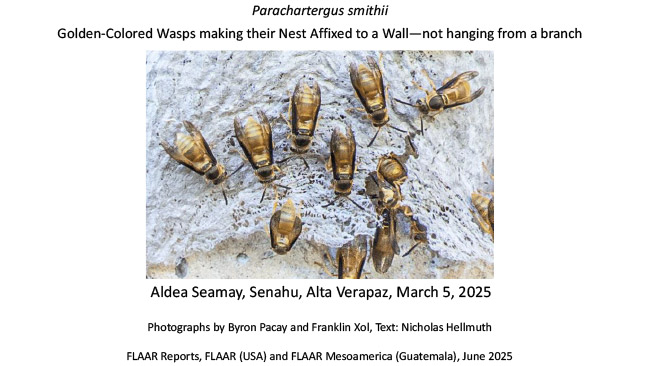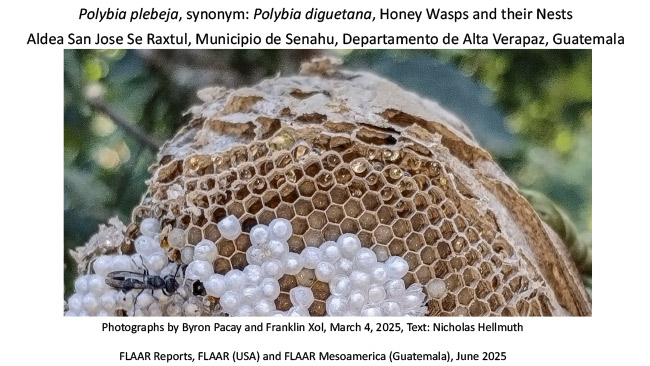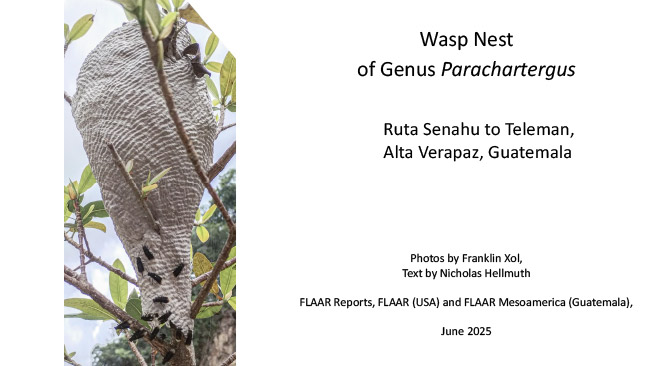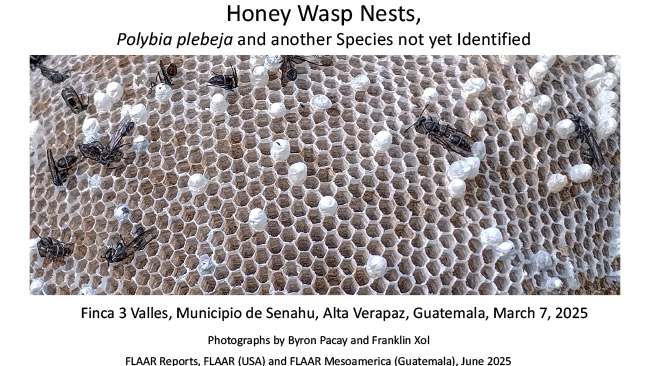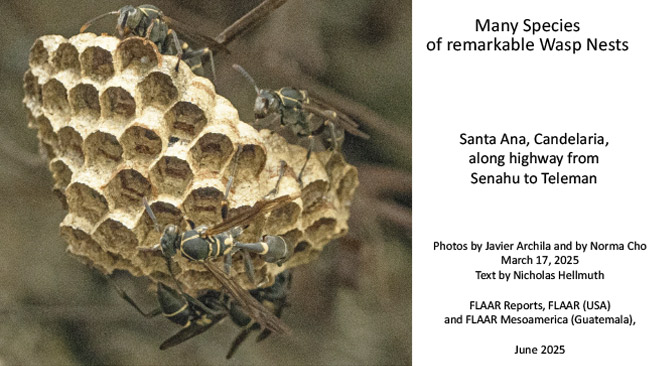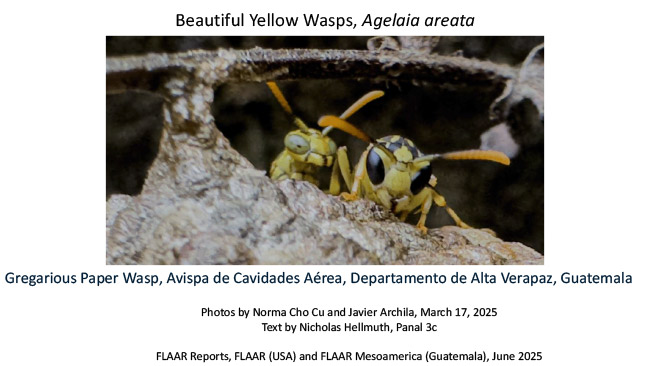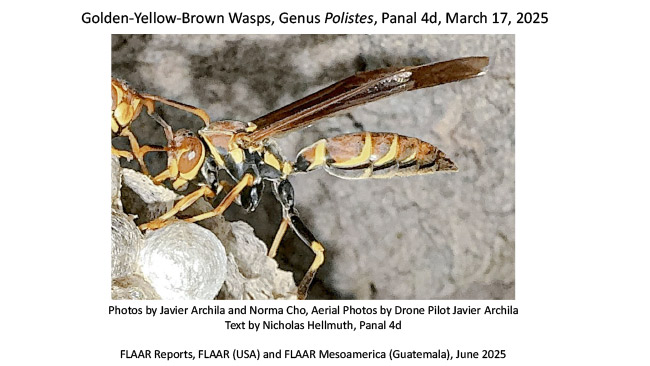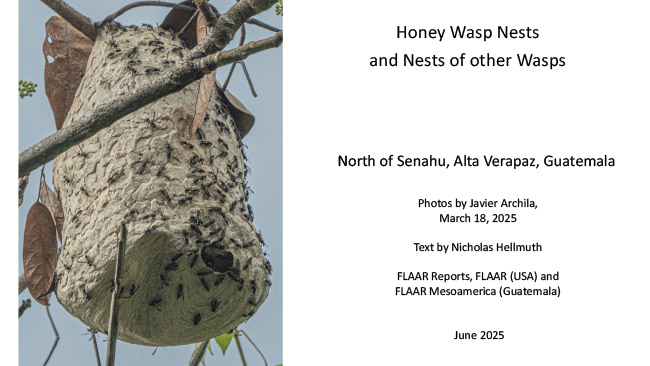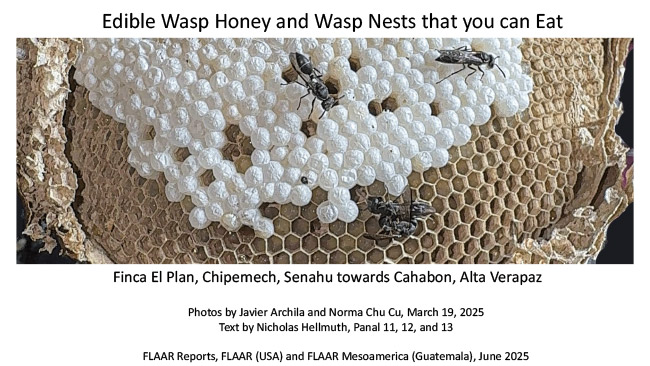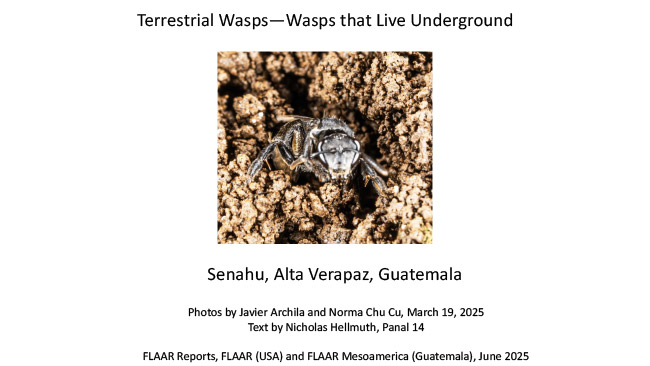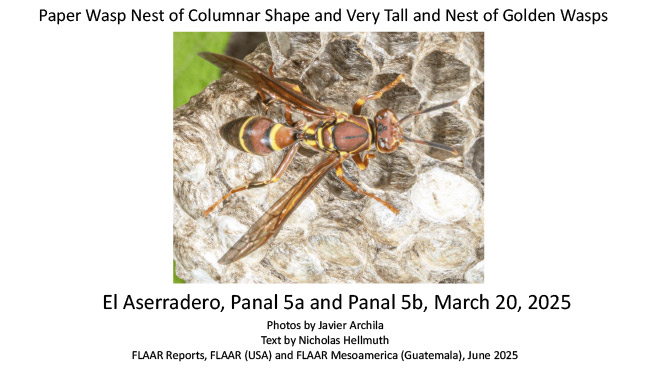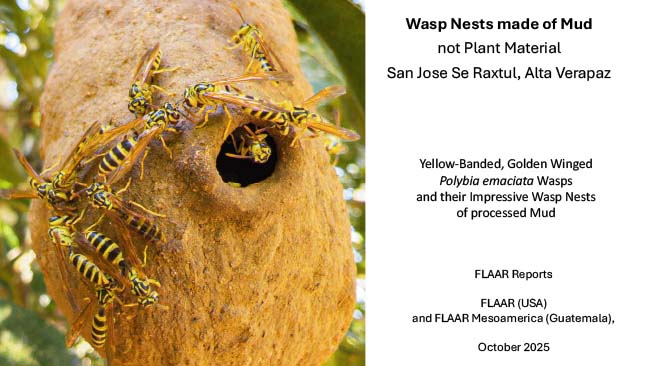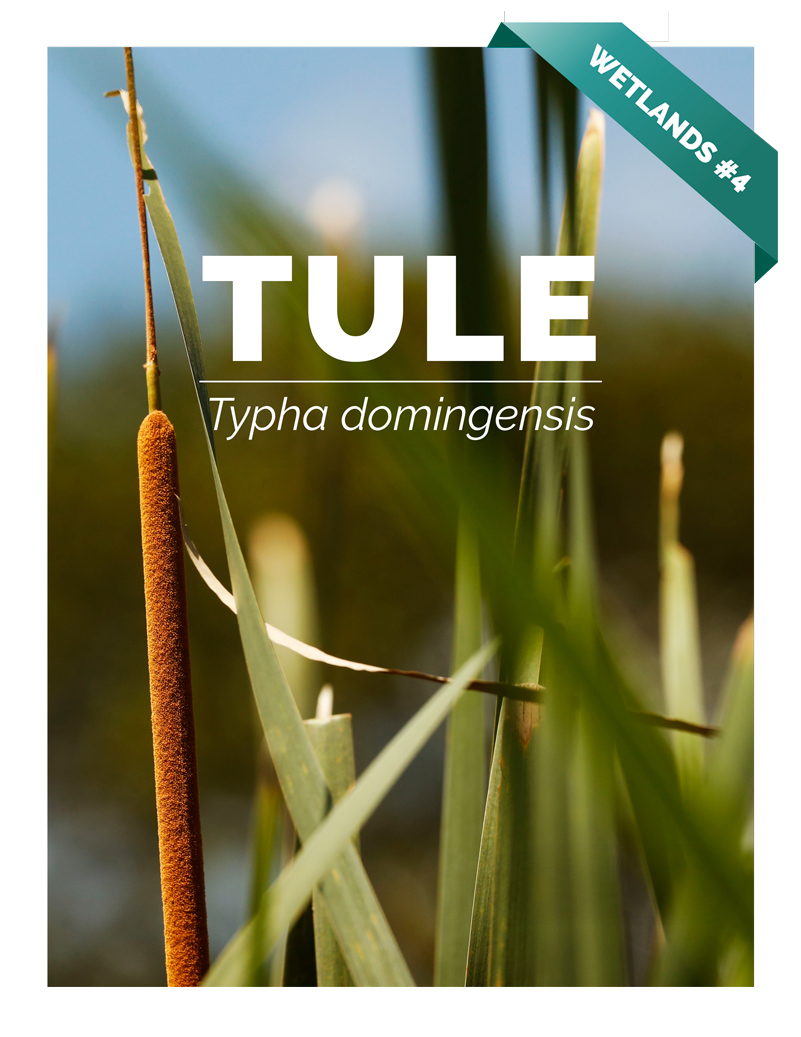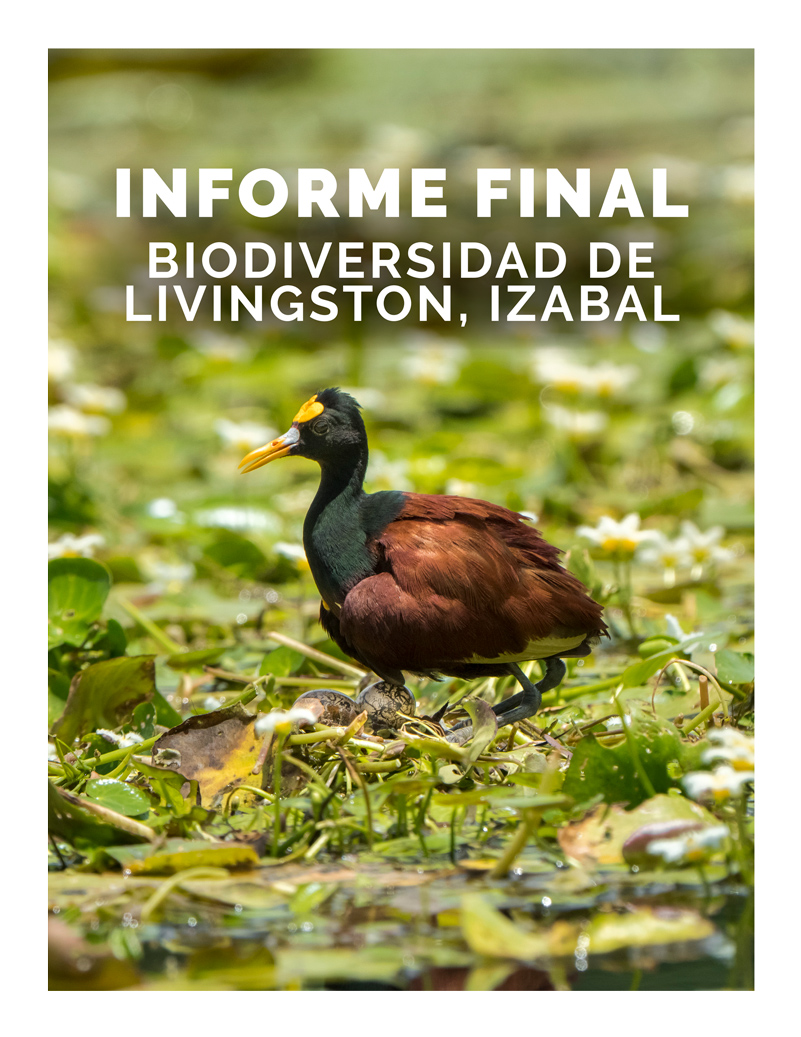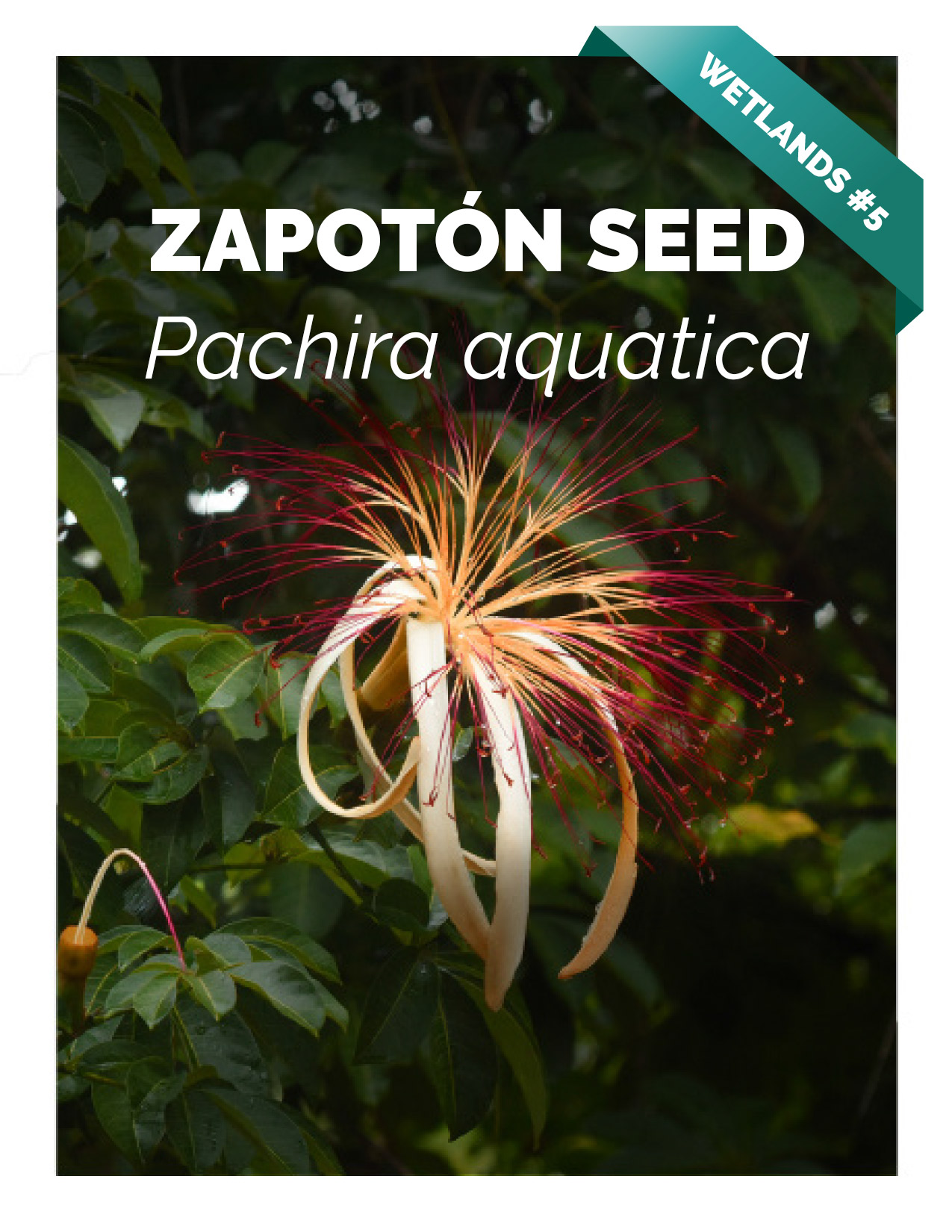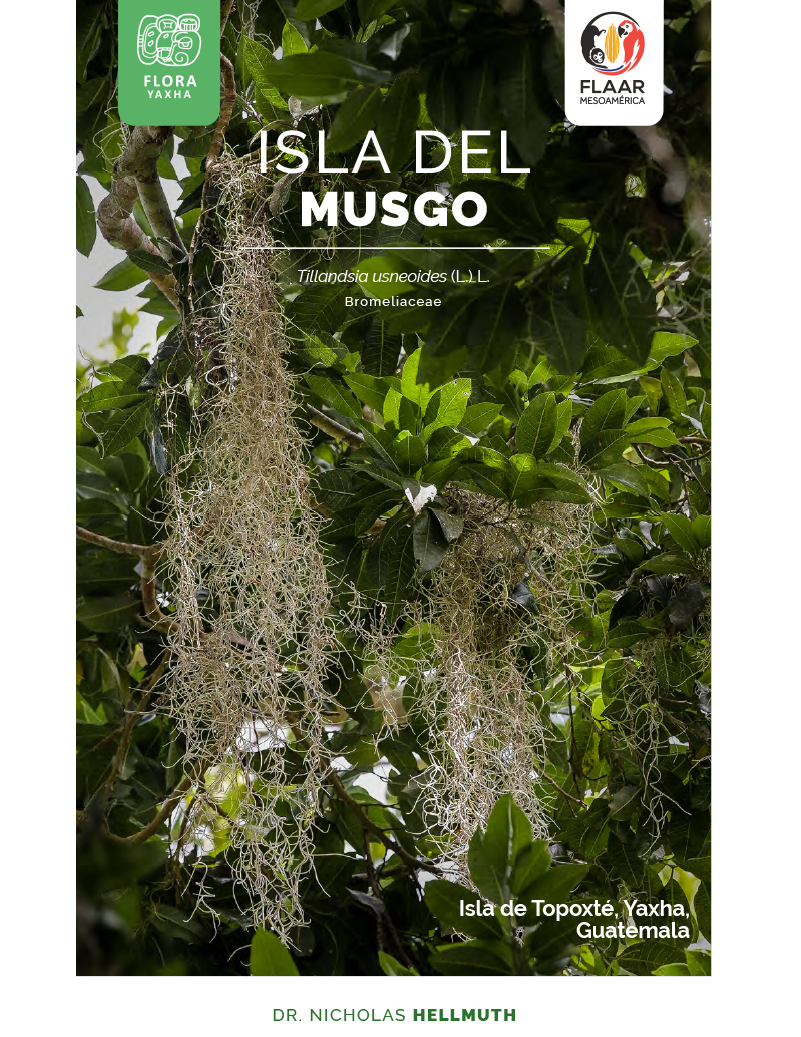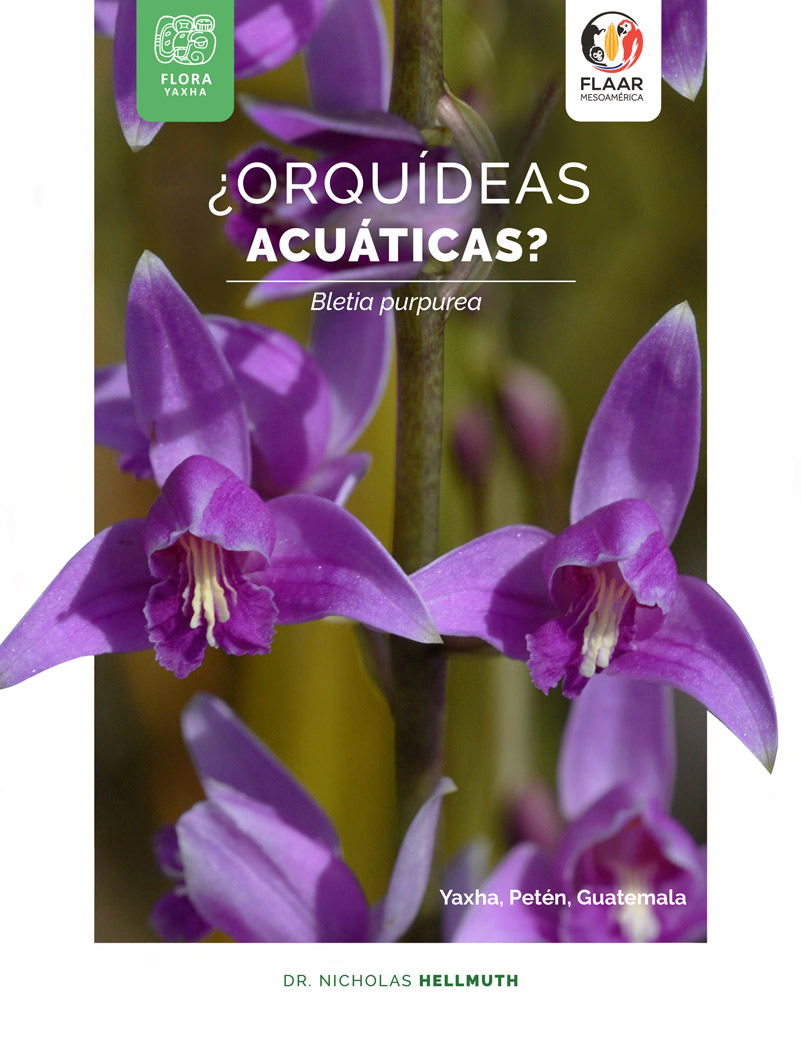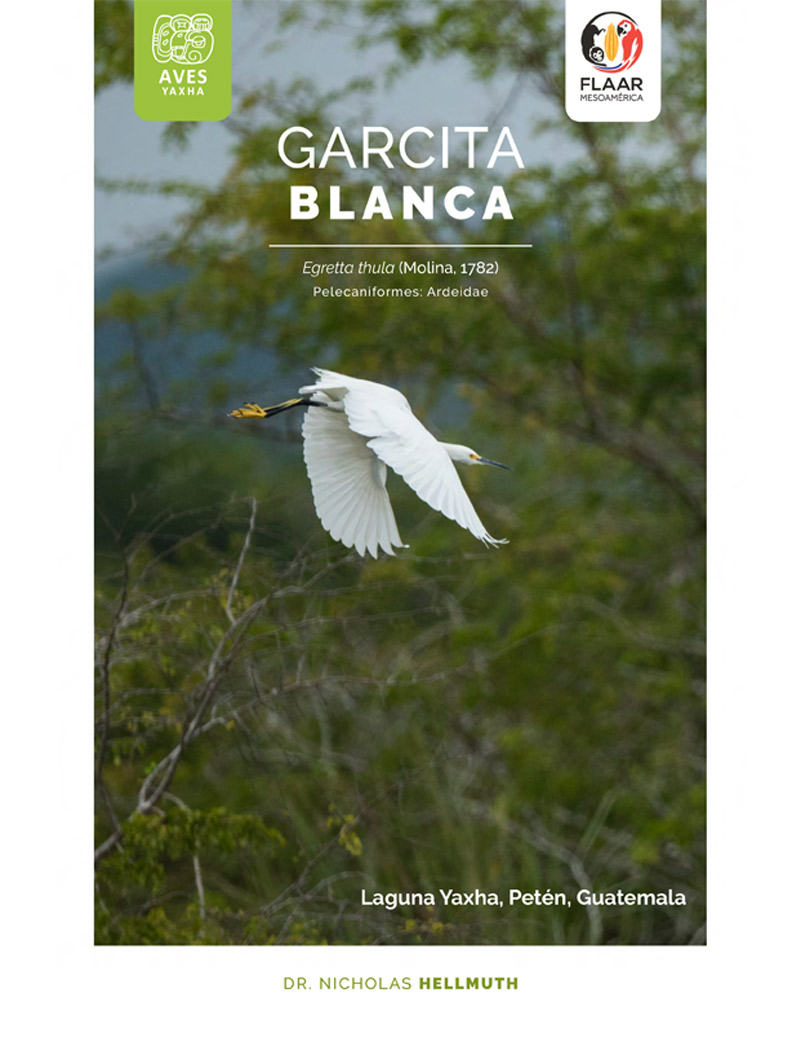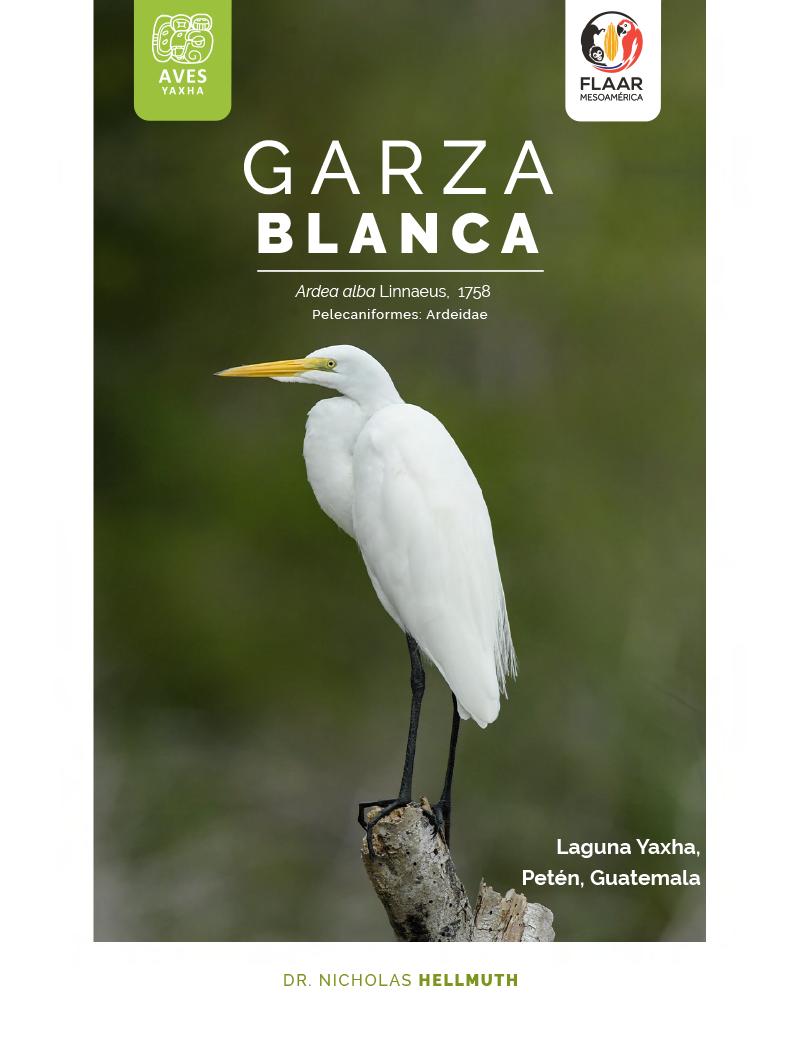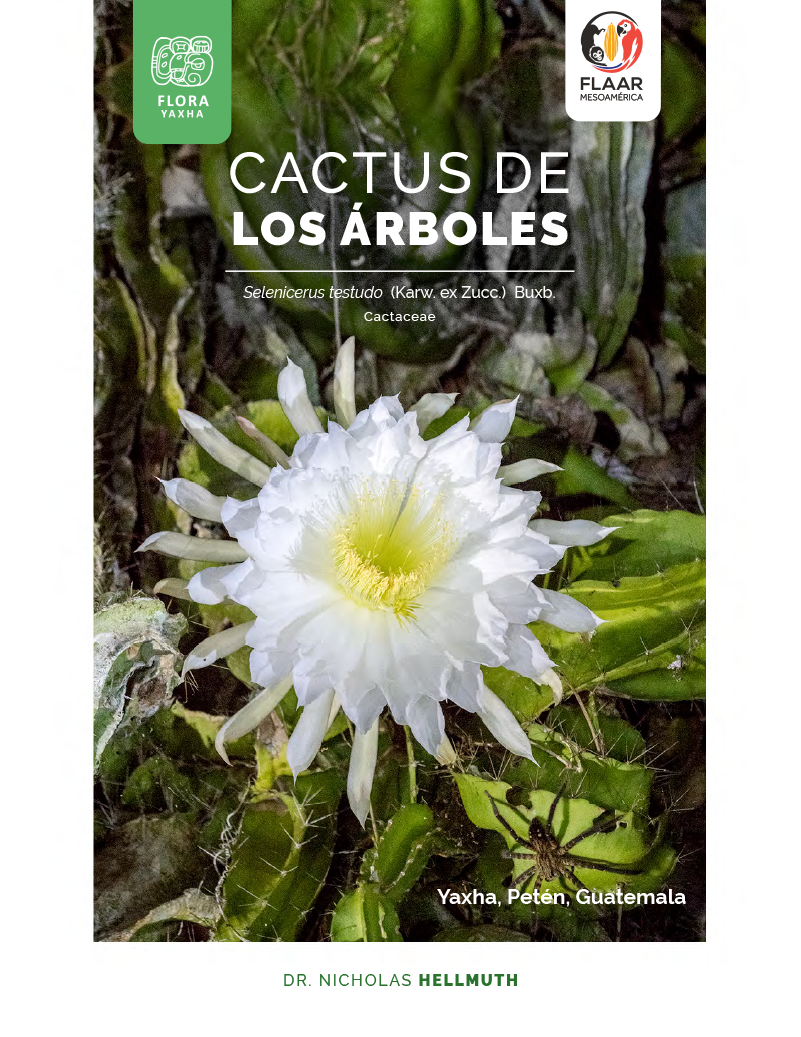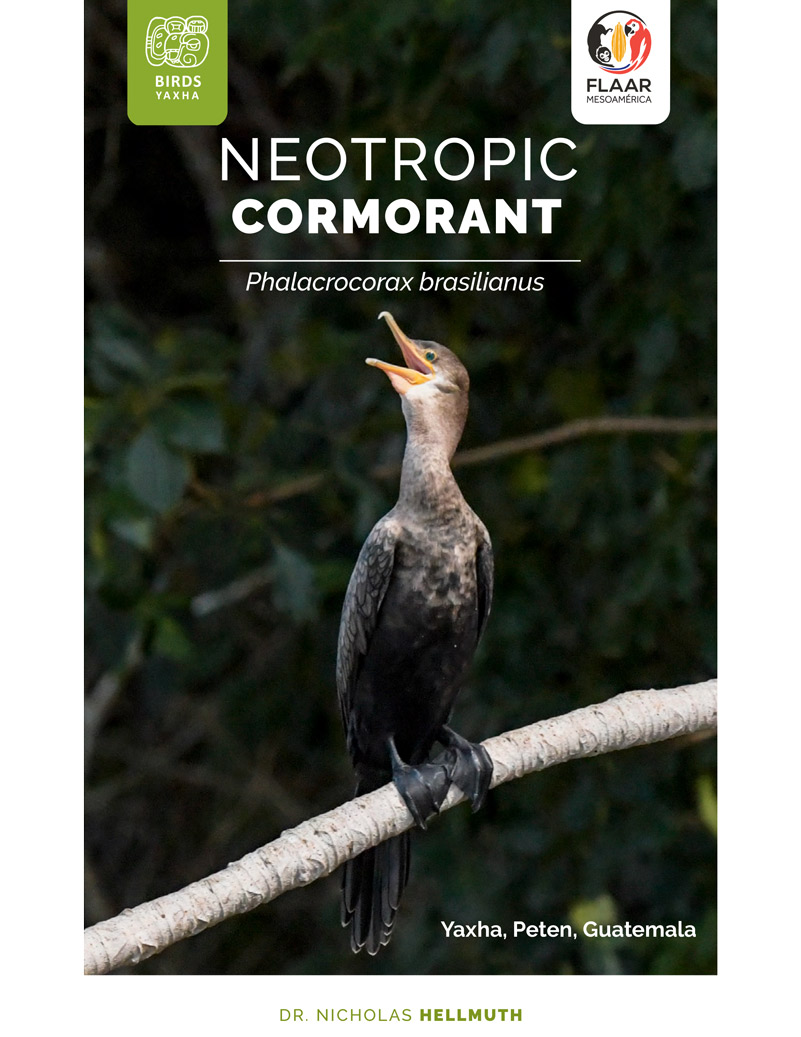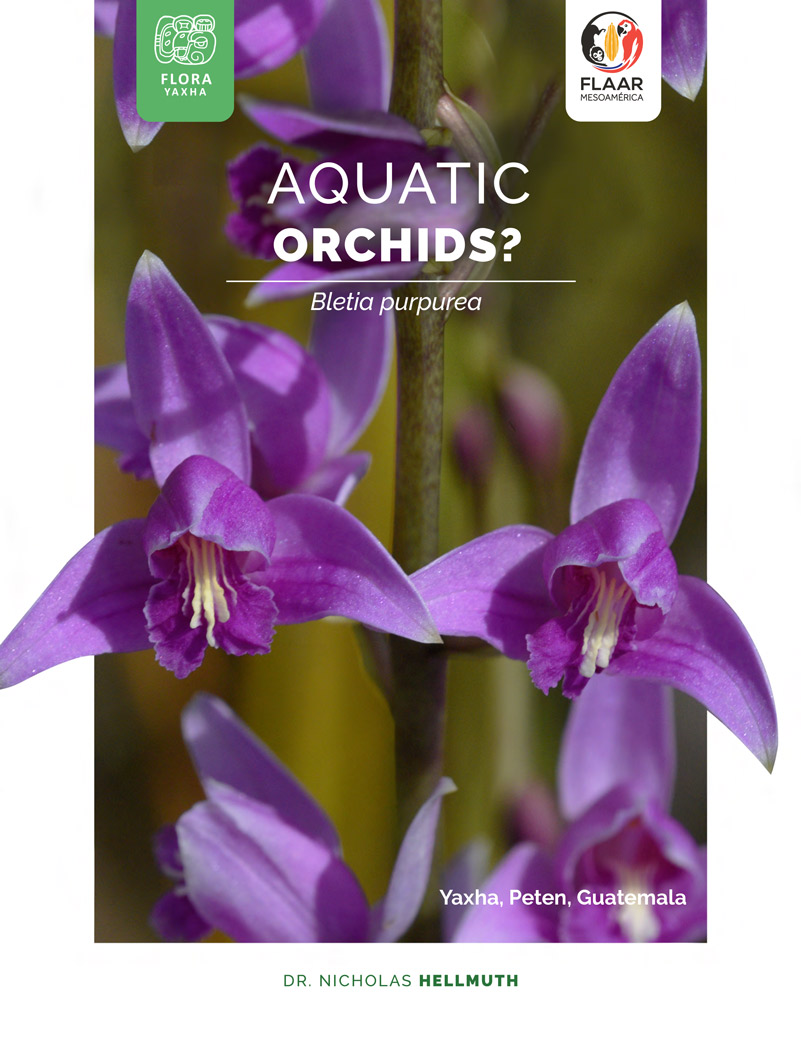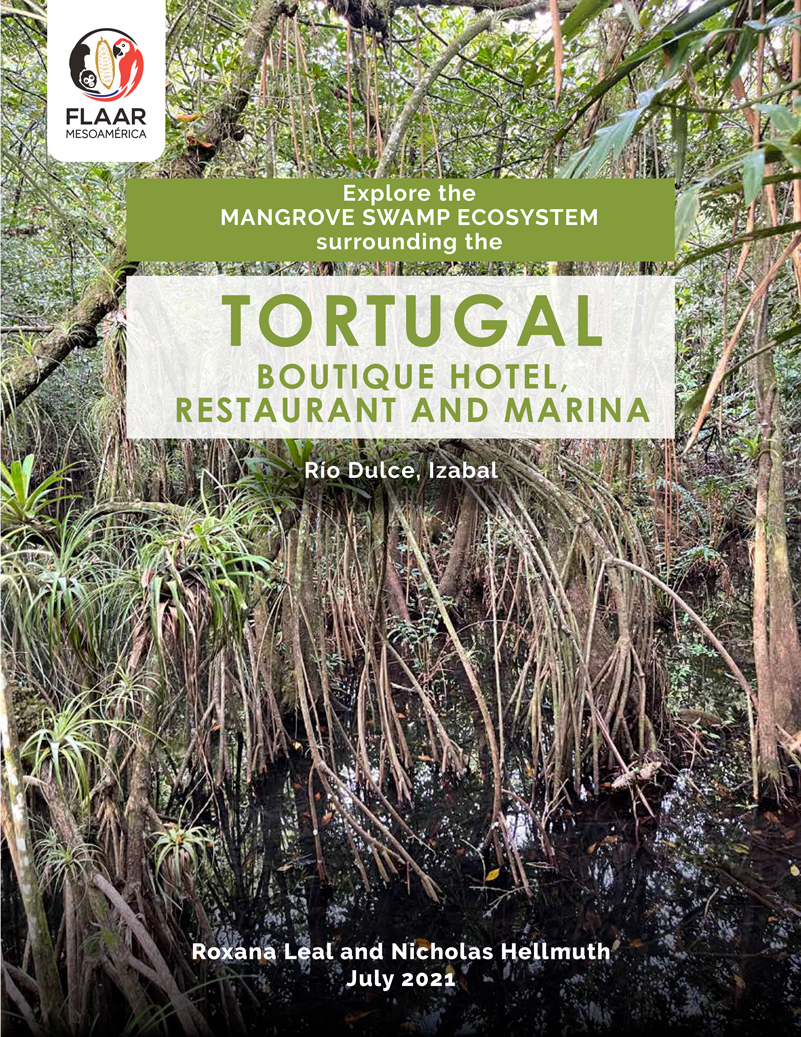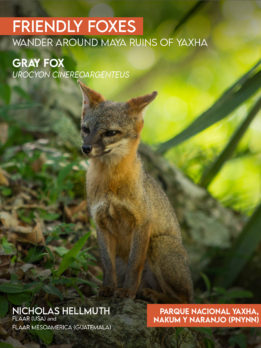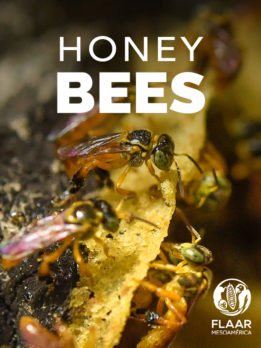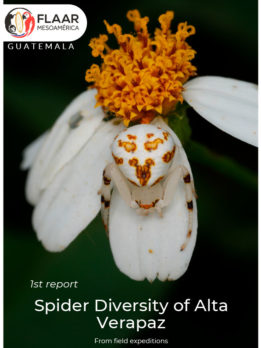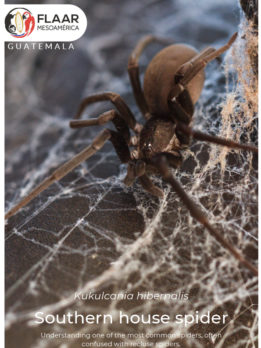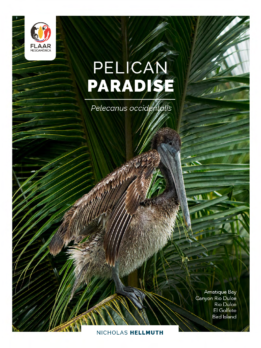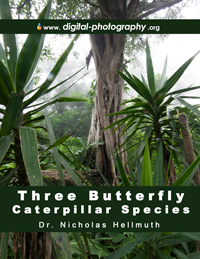Although the Mexican Honey Wasp is known to make edible honey, and although there are a few videos of Maya people in Guatemala (and Mexico) eating wasp honey and wasp larvae, 99.99% of the people I speak with say they have never heard that wasps made honey. And they are stunned when I tell them that lots of Maya people eat the actual nests—literally. I had the wasp nest in my hand, with wasps all over it, and took off a piece of the wasp nest to eat—you can see which parts have honey in each cell of the honeycomb. Most wasp species that make edible honey do not sting.
Not all wasps make honey, but many have incredible engineering to create amazing nest structures. So the following dozen FLAAR Reports show many different kinds of wasps from two field trips to the Senahu area of the mountains of Alta Verapaz, south of Cahabon.
Polybia plebeja, synonym: Polybia diguetana, Honey Wasps and their Nests Aldea San Jose Se Raxtul, Municipio de Senahu, Departamento de Alta Verapaz, Guatemala
Parachartergus smithii Golden-Colored Wasps making their Nest Affixed to a Wall—Not Hanging from a Branch Aldea Seamay, Senahu, Alta Verapaz, March 5, 2025
Polybia plebeja, synonym: Polybia diguetana, Honey Wasps and their Nests Municipio de Senahu, Departamento de Alta Verapaz, Guatemala
Wasp Nests, Road from Senahu, downhill to Teleman, Alta Verapaz, Guatemala
Wasp Nest of Genus Parachartergus Ruta Senahu to Teleman, Alta Verapaz, Guatemala
Honey Wasp Nests, Polybia plebeja and another Species not yet Identified, Finca 3 Valles, Municipio de Senahu, Alta Verapaz, Guatemala, March 7, 2025
Many Species of remarkable Wasp Nests Santa Ana, Candelaria, along highway from Senahu to Teleman
Beautiful Yellow Wasps, Agelaia areata Gregarious Paper Wasp, Avispa de Cavidades Aérea, Departamento de Alta Verapaz, Guatemala
Golden-Yellow-Brown Wasps, Genus Polistes, Panal 4d, March 17, 2025
Honey Wasp Nests and Nests of other Wasps North of Senahu, Alta Verapaz, Guatemala
Edible Wasp Honey and Wasp Nests that you can Eat Finca El Plan, Chipemech, Senahu towards Cahabon, Alta Verapaz
Terrestrial Wasps—Wasps that Live Underground Senahu, Alta Verapaz, Guatemala
Paper Wasp Nest of Columnar Shape and Very Tall and Nest of Golden Wasps El Aserradero, Panal 5a and Panal 5b, March 20, 2025
In addition to searching for as many wasp species that make edible honey (the dozen reports above), we are also studying wasp nest engineering and architecture, both of paper-wasp nests and nests made of completely different material: mud. So the following report is on a wasp that has engineered their nest to be constructed out of mud--that of course dries and becomes a solid protection for the wasp colony inside. The "mud-wasps", Polybia emaciata do not make honey, but they definitely make an eco-friendly nest, out of dirt that they liquidize to stick together.
Wasp Nests made of Mud, not Plant Material, San Jose Se Raxtul, Alta Verapaz, an important species to study, but they don't make honey.
The research teams at FLAAR Mesoamerica have been photographing wasp nests on many field trips of the recent two decades. Here are a few links to show these other nests.
Photogenic yellow-wasp “paper” nest.
If you stay overnight at hotel El Sombrero Ecolodge, especially while having breakfast or lunch, you can see several gorgeous wasp nests in the forest between the restaurant and the shore of Lake Yaxha.
As part of our long-range interest to document size and shape of wasp nests that pertain to each wasp genus, we provide downloads to two FLAAR Reports, each one on remarkable wasp nest exterior architecture.
We show a very common size and shape of wasp nest from area of Arroyo Petexbatun, upstream from Rio la Pasion, Sayaxche.
Many wasps are pollinators, therefore why do we spray carcinogenic pesticides all around our house? Wasp pollinators help plants reproduce.
Our long-range goal is to provide documentation to archaeologists and ethnohistorians to cite all the references to the Maya eating larvae, AND to provide documentation that the Maya still today eat honey from wasp nests. YES, many many different species of Guatemala make edible honey. Earlier this month we published a FLAAR Reports that included examples of honey wasps from Huehuetenango (and other wasp nests of interest even when those other wasps don’t make honey).
We have also studied stingless bee nests for several years. We have lots of reports but here is one of our webpages on stingless bees.
The FLAAR Mesoamerica team has also found, photographed, and published arboreal ant nest colonies.
We have even found bee nest exit tubes sticking out from inside arboreal ant nests.
Posted June 24, 2025 by Nicholas Hellmuth



